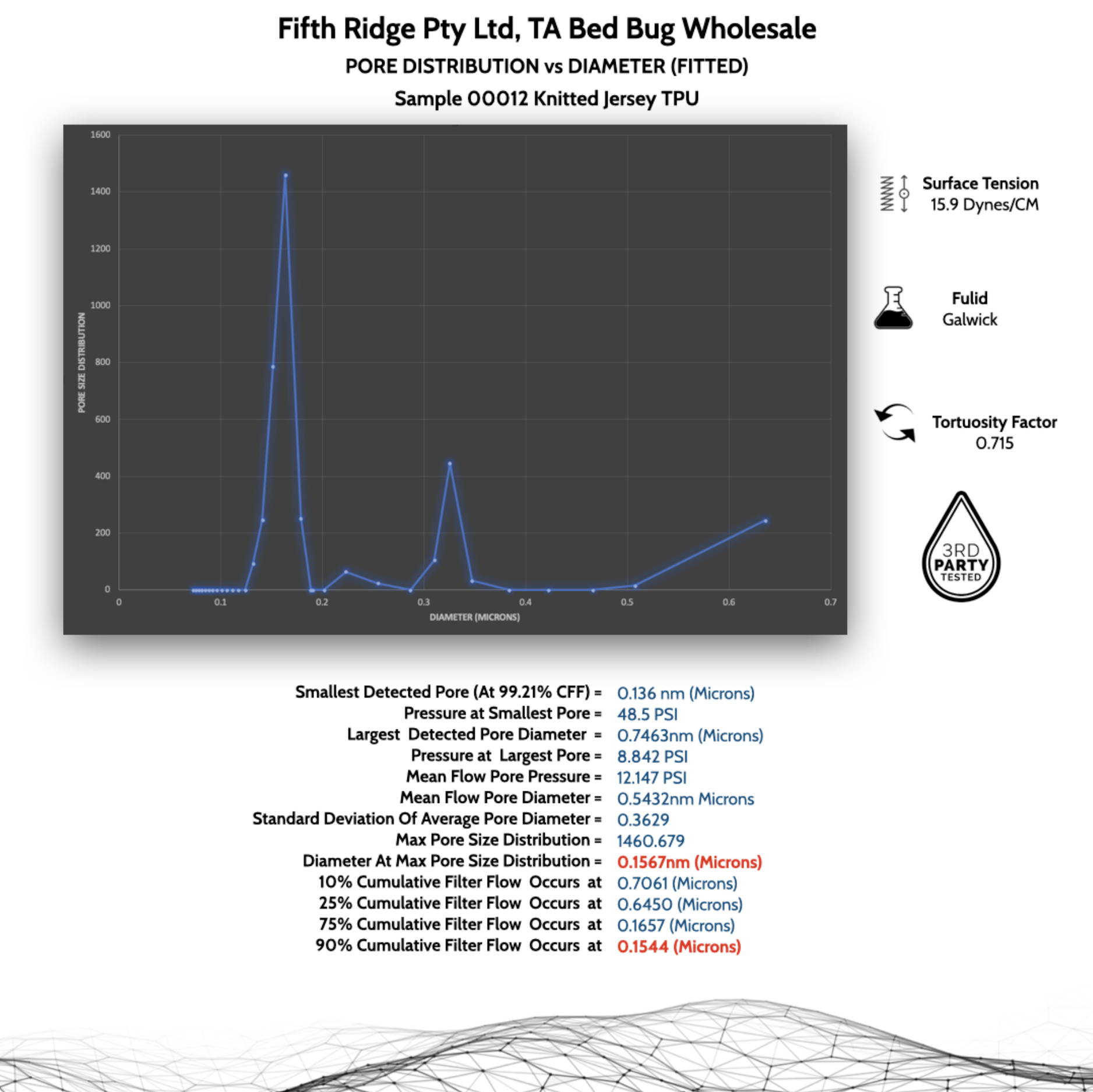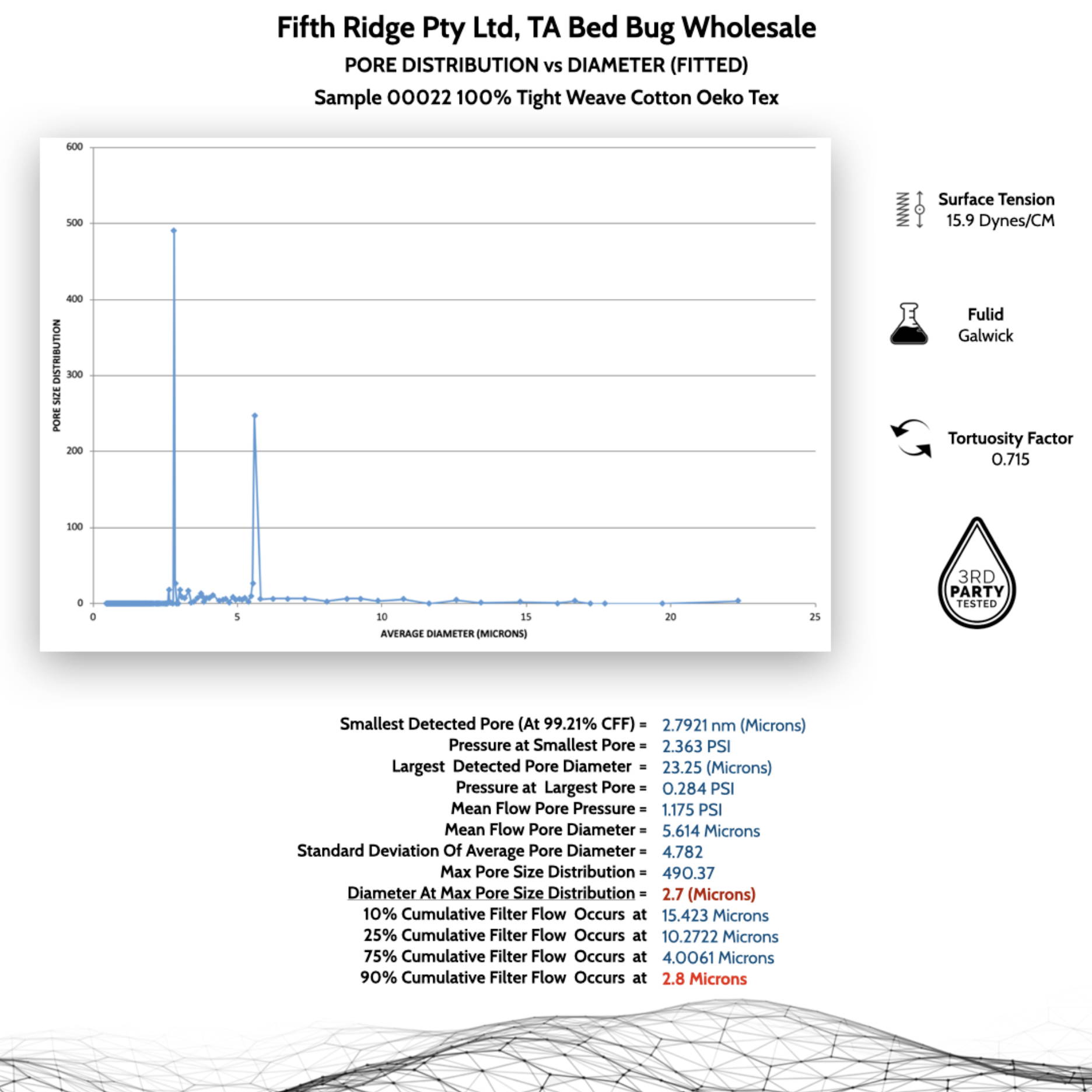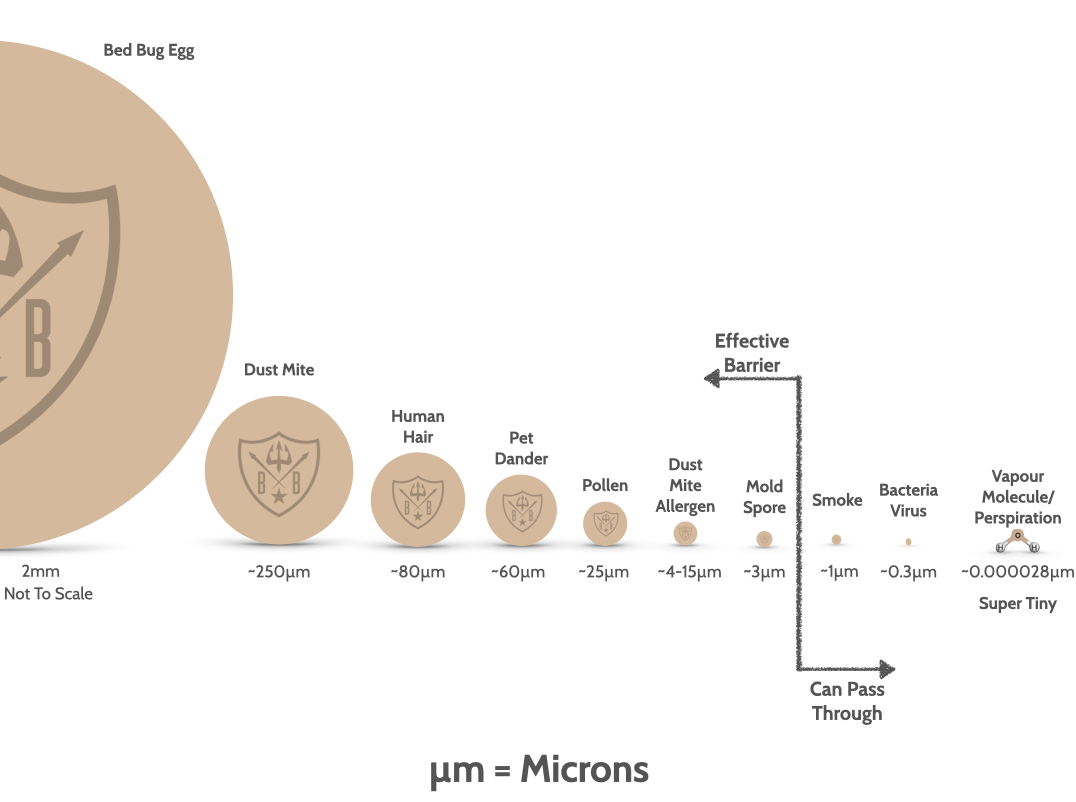How Do Encasements Work For Dust Mite Allergies and Asthma
Encasements work for dust mite allergies and asthma symptoms by providing a physical barrier between the sleeping surface and the person. Dust mites are microscopic pests approximately 200µm (microns) in size that feed on dead skin cells. You will find dust mites in all mattresses, pillows, quilts and other bedding materials like soft toys. Their feces and body fragments are known as allergens. Each dust mite is known to leave 10-15 feces droppings behind every day. These droppings contain a potent chemical enzyme excreted from the dust mite after assisting in the decomposition of dust particles in the dust mite's stomach. These enzyme-laced allergens and body fragments can trigger allergies, asthma, and other respiratory problems when they enter the respiratory system. Each allergen particle is between 5µm and 20µm in size. The goal of the encasement is to act as a filter system or barrier, not allowing these particles to become airborne and enter your respiratory system.
Polyester Jersey & TPU Test Data

100% Cotton TEST DATA

Approximately 10-15% of the world's population have a dust mite allergy.
We manufacture our encasements from either a tightly woven cotton with a ~2.8µm (micron) pore size, or a waterproof knitted jersey fabric with a pore size much smaller than 2µm. These products are durable and designed to prevent dust mites and their allergens from passing through the fabric, seams or stitching. The waterproof textile helps to prevent the growth of mold, mildew, and other allergens that can exacerbate allergy symptoms.
The zipper closure on the encasement provides an added layer of protection. Once the encasement is in place, you can use your normal bedding on top, including sheets, blankets, and comforters, and still enjoy the protection of the encasement. Its suggested that a slip on mattress protector is used over the top of a mattress encasement to protect it from becoming dirty and needing to be washed. This slip on mattress protector will end up collecting any surface build up of dust mites and allegens and should be washed each week with you bed linen

This diagram above indicates the effectiveness of our encasements and their ability to act as an effective filter system.
In conclusion, encasements effectively control dust mite allergens and alleviate symptoms for those with dust mite allergies and asthma. Providing a physical barrier between the sleeping surface and the person can help heavily reduce symptoms, improve sleep quality, and promote overall health and well-being. If you suffer from dust mite allergies or asthma, consider using encasements to help protect yourself from allergens and improve your sleep quality today.

